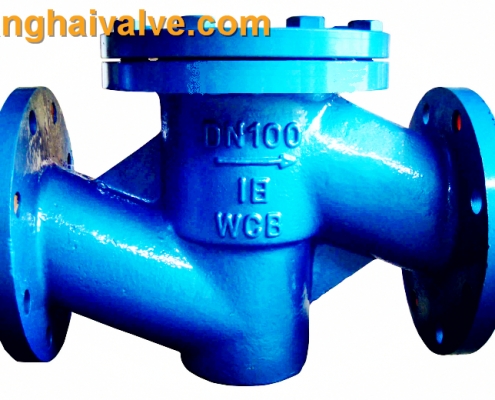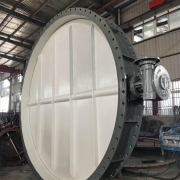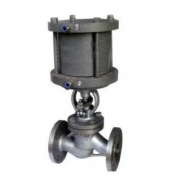Introduction of cast steel lift swing check valve
1. Overview of Cast steel lift check valve:
The lift check valve is selected for the pipelines of various working conditions such as petroleum, chemical industry

lift swing check valve (2)
and thermal power plants with a nominal pressure of PN1.6~6.4MPa and a working temperature of -29~550℃. Applicable media are: water, oil, steam, etc.
2. Structural features of Cast steel lift check valve:
1. Exquisite selection of materials, in line with domestic and foreign standards, the highest quality of materials.
2. The sealing pair is advanced and reasonable. The sealing surface of the valve disc and the valve seat is made of iron-based alloy or Stellite cobalt-based cemented carbide. It has good wear resistance, high temperature resistance, corrosion resistance and scratch resistance. ,long lasting.
3. The products are designed and manufactured according to the national standard GB/T12235.
4. Various piping flange standards and flange sealing types can be used to meet various engineering needs and user requirements.
5. The valve body has a complete range of materials, and the gasket can be reasonably selected according to actual working conditions or user requirements, and can be suitable for various pressure, temperature and medium working conditions.
According to user requirements, check valves with different structures and connections can be designed and manufactured for use with various equipment.
H41H lift check valve: Do not allow the check valve to bear weight in the pipeline. Large-scale check valves should be independently supported to prevent them from being affected by the pressure produced by the pipeline system. When installing, pay attention to the direction of medium flow should be consistent with the arrow direction indicated by the valve body. Suitable for water, steam, oil, nitric acid, acetic acid, oxidizing medium, urea and other media.
H41H, H41Y type PN16~PN100 lifting steel check valve is one of the important links in the production process regulation system. It is a valve that controls the one-way flow of the medium in the pipeline to prevent the medium from flowing back. It is widely used in purification equipment, petroleum, chemical industry, metallurgy, electric power, textile and other production processes.
Product features of lift check valve:
1. H41H and H41Y lift-type steel check valves have the advantages of simple structure, reliable action and convenient maintenance.
2. When the medium flows into the valve body from the direction indicated by the arrow of the valve body, the pressure of the medium acts on the valve flap to produce an upward thrust. When the medium thrust is greater than the weight of the valve flap, the valve opens. When the force of the medium pressure acting on the disc after the valve plus the weight of the disc itself is greater than the force of the pressure acting on the disc before the valve, the valve is closed to prevent the medium from flowing back.
Lift check valve refers to the valve that automatically opens and closes the valve flap depending on the flow of the medium itself to prevent the medium from flowing back, also known as check valve, one-way valve, reverse flow valve, and back pressure valve. Check valve is a kind of automatic valve, its main function is to prevent the back flow of the medium, prevent the pump and drive motor from reversing, and discharge the container medium. Check valves can also be used to supply pipelines for auxiliary systems whose pressure may rise above the system pressure. Check valves can be divided into swing check valves (rotating according to the center of gravity) and lift check valves (moving along the axis).
Check valves are also called check valves, check valves, reverse flow valves, and back pressure valves.
The function of the check valve is to only allow the medium to flow in one direction and prevent the reverse flow. Usually this kind of valve works automatically. Under the action of the fluid pressure flowing in one direction, the valve flap opens; when the fluid flows in the opposite direction, the fluid pressure and the self-coincidence of the valve flap act on the valve seat, thereby cutting off the flow. Among them, the internal thread check valve and the butterfly check valve belong to this type of valve.
It includes swing check valve and lift check valve. The swing check valve has a hinge mechanism and a valve flap like a door that rests freely on the inclined valve seat surface. In order to ensure that the valve clack can reach the proper position of the valve seat surface every time, the valve clack is designed in a hinge mechanism so that the valve clack has enough space for rotation and makes the valve clack really contact the valve seat. The valve disc can be made of metal, or inlaid with leather, rubber, or synthetic covering, depending on the performance requirements. When the swing check valve is fully opened, the fluid pressure is almost unimpeded, so the pressure drop through the valve is relatively small. The valve disc of the lift check valve is seated on the sealing surface of the valve seat on the valve body. Except that the disc can be lifted and lowered freely, the rest of this valve is like a shut-off valve. The fluid pressure lifts the disc from the sealing surface of the valve seat, and the backflow of the medium causes the disc to fall back onto the seat and cut off the flow. According to the conditions of use, the valve disc can be an all-metal structure, or it can be in the form of a rubber pad or a rubber ring inlaid on the disc holder. Like a shut-off valve, the passage of fluid through the lift check valve is also narrow, so the pressure drop through the lift check valve is larger than that of the swing check valve, and the flow rate of the swing check valve is restricted Rarely.

 tanghaivalve.com
tanghaivalve.com  tanghaivalve.com
tanghaivalve.com

 © Copyright 2020 Tianjin Tanghaidongyang Valve Co., Ltd. All Rights Reserved.
© Copyright 2020 Tianjin Tanghaidongyang Valve Co., Ltd. All Rights Reserved.